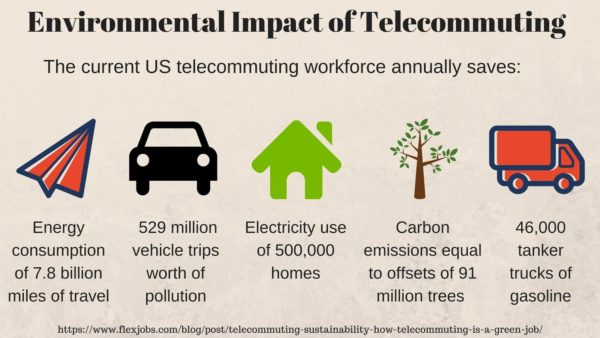The Rise Of Telecommuting Will Happen Faster Than We Expected
There is no getting away from the fact that the way we work has changed over the last few months. As the Covid-19 pandemic spreads across the globe, the usual commute into city centres has been replaced for many of us, with pulling a chair up to our kitchen table, and remote working from our homes. With the current end date of this pandemic nowhere in sight, it is fair to say that this is going to be the way vast numbers of us work for quite some time to come.
So what exactly can we learn from the current situation we find ourselves in, when it comes to working? Well for a start, the workplace of the future is likely to be vastly different to what it looks like now, and Covid-19 is likely to be somewhat of a catalyst in moving us towards that future at a much faster rate than we perhaps anticipated.
The idea of telecommuting has been around for some time now, but only in the last decade or so has it been feasible for most people. In its most basic form, telecommuting is simply working from home using whatever technology you have at your fingertips to help facilitate that work.
Whilst this is often how small companies are started these days, more and more enterprise-level companies are getting in on the act, and the current Covid-19 pandemic has proved to be an unplanned test for many, giving them insight into what they may need to improve upon should the need arise again, and secondly, whether some aspects of telecommuting should remain permanent, regardless of the situation.
What are the benefits of telecommuting?
Telecommuting can be extremely beneficial for both the employer and employee. In a 24/7 world, where working the usual 9 to 5 is fast becoming a rarity, having the ability to work from home adds a level of flexibility that plenty of workers find both useful and enticing.
Thanks to telecommuting, being able to start work a few hours early, then ‘knock off’ a few hours early (but remaining contactable should a query arise) can make all the difference to busy parents or workers with other commitments. For other employees, this may mean they need an hour-long break in the day to help pick the kids up from school. This sort of arrangement is easiest when a team is working remotely.
Image credits: Flexjobs
For the employer, having a team that has the ability to mould working routines around other aspects of their life often results in a very happy workforce, which tends to lead to more productivity and workers who are less likely to take leave. This flexibility is a two-way street, creating efficient and agile companies that can react far quicker than those who are more stringent in their work practices and ethics.
The foundations of a telecommuting world
This way of working has only been possible in recent times, thanks to an ever increasingly robust telephony systems, and expanding data infrastructure. The rollout of superfast fibre broadband and the emergence of 5G is only going to further increase the ability for huge enterprises to move away from the typical structure that they have been privy to since the inception of the modern business era, and into a far more nimble organisation.
Graphic credits: The information is provided by Dynamo LED Displays which is one of the UK’s leading LED screen manufacturers
Not only is the infrastructure to thank for this change, but the software that we use on a daily basis has transformed the way we can now work, with VoIP solutions, videoconferencing, cloud-based storage, and multi-user collaboration applications, there is very little work that can’t be done remotely these days.
Meetings are held using Microsoft Teams, collaboration is done via Go To Meeting or Slack, while a companies data is housed across multiple servers in multiple continents, allowing work to be seamlessly integrated between teams anywhere on the globe. These services have improved immensely in functionality and quality, with many conference call apps now supporting upwards of 100 participants, along with the ability to screen share and work on documents together in real-time.
Telecommuting is here to stay
The economic world of the future will no doubt move towards remote working and telecommuting for many reasons. Evermore crowded cities mean that vast swathes of workers will no longer be able to live within commuting distance to central HQ office blocks, increased traffic in general will mean that those who do may face untenable travel times, whilst house prices and rent will soar exponentially as demand rises in these cities, pushing the lower-paid further afield.
This pandemic may well push enterprise companies to rethink their working strategies, but it won’t be the only reason that more of us will work from home in the near future. Covid-19 will be a catalyst, but the need for change will be far more nuanced in the long run.




















